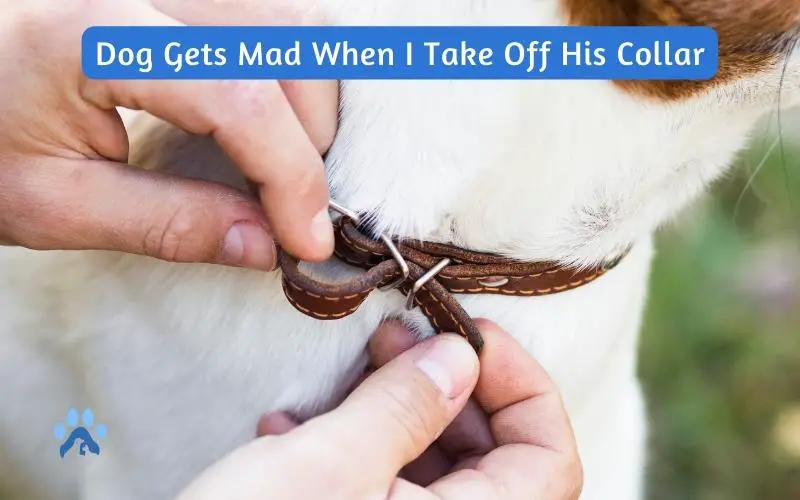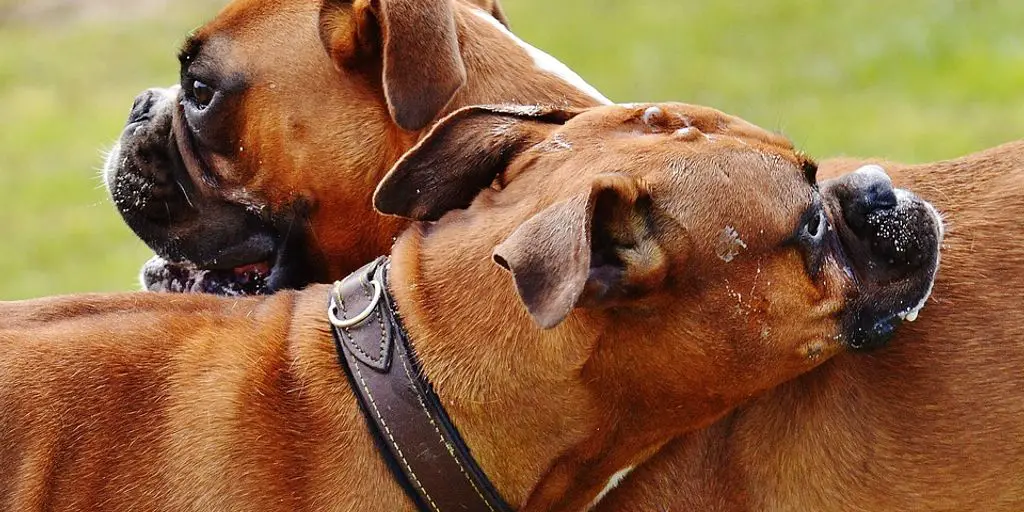Dog owners and their canine companions have a unique bond based on mutual respect and understanding. This can be observed in a number of ways, such as how they react to cues and directives.
However, certain behaviors can be challenging to manage, and it’s essential to understand why they occur to find the best solution. One such behavior is a dog’s reaction when his collar is removed.
Many pet owners have asked why my dog gets mad when I take off his collar. Apparently, it may happen for several reasons, including insecurity and fear. As a result, they become agitated, growling, and barking at their owner.
Therefore, we have discussed a few crucial pointers in this article to prevent such sudden behavior and identify the associated causes of a dog acting agitatedly when taking his collar off.
Here’s everything you need to know,
Why Does My Dog Like His Collar So Much?
Many people ask why their dog seems to love their collar so much. After all, they can’t exactly go somewhere with it on, right? Well, there could be a few explanations for why your pet might be so attached to its collar.
For one thing, it’s a sign of belonging. When they see their collar, they know they are part of a pack and are loved. Additionally, it serves as a memory of all the fun they’ve had while wearing it. Their collar has been with them through walks in the park to cuddles on the couch.
But most of all, dogs may look to their collars for comfort. A collar can be a great source of comfort for a dog. It’s something familiar and consistent that your pup can rely on.
Additionally, some collars have special features meant to give dogs comfort — such as tags or charms that make noise when the pup shakes his head.
Three Primary Reasons Why Does My Dog Gets Mad When I Take Off His Collar
If you’ve ever had your dog get mad at you when taking his collar off, you’re not alone. It’s a prevalent problem, and there are three main causes.
First, your dog may be uncomfortable with the process of having his collar removed. This is especially true if he’s never been trained to accept it. Dogs used to have their collars removed calmly and patiently are much less likely to get upset about it.
Another reason your dog may get mad when you take his collar off is that he’s not used to it. Dogs are creatures of habit and like things to stay the same.
So, if you suddenly start taking his collar off without any warning or explanation, They may feel naked and exposed without their collars, which can cause them to become agitated.
Finally, your dog may associate the removal of his collar with something unpleasant happening afterward. For example, if he’s taken to the vet or groomer while wearing his collar, he may panic as soon as it comes off.
Train Your Dog to Accept the Process of Collar Removal
It is possible to teach your dog to accept having its collar removed by using positive reinforcement. The goal is for your dog to learn that taking off his collar brings rewards and treats, not fear or anxiety.
Start by conducting practice sessions in a low-stress environment. Be sure to use a happy, upbeat tone when talking to your pup, as this will help make the collar removal process more enjoyable.
Give him verbal praise and reassuring pats as you slide the collar off so he knows he’s doing something right. When you’re done, give him a treat as a reward.
It may take some time for your pup to get used to the collar-removal process, but with patience and consistency, he should eventually get comfortable with it.
Whenever you put on or remove his collar, make sure to speak calmly and gently; avoid using harsh tones or loud noises that may startle him.
Once your pup has become accustomed to the process of collar removal, it’s crucial to practice, so he doesn’t forget what he’s learned. You can even make it fun by playing games like hide-and-seek — hide his collar somewhere in the house, then let him find it!
This will help keep his interest in the activity while reinforcing the connection between removing his collar and receiving rewards.
Finally, remember never to force your pup into wearing or removing a collar if he is uncomfortable with it — instead, work slowly and patiently until he adjusts to its presence on his body.
Make Your Dog Feel Comfortable Without Having a Collar On
It’s easy to feel like your dog needs to have a collar on at all times – after all, it can help keep them safe.
Though occasionally, there are many valid reasons to let your dog go collar-free. For one, it can help them to feel more comfortable and relaxed.
If you’re unsure how to make your dog feel comfortable without a collar, you may let him wear a bandana or scarf around their neck first. It will help them feel a little more secure while allowing them the freedom to move around. You can also try giving them some chew toys or bones to keep them occupied.
This way, once your dog is comfortable without a collar on, you can easily take off his collar whenever it’s not needed, and your dog will not react aggressively or agitated at all.
Using Toys and Exercise
Providing toys and engaging in exercise are excellent ways to help prevent aggressive behavior when taking your dog’s collar off.
Toys provide an outlet for pent-up energy and frustration, while exercise helps burn off excess energy that can lead to aggression.
Additionally, engaging your dog in playtime before removing his collar can help him learn to associate the removal of his collar with something fun and enjoyable rather than as a punishment.
Establish Clear Rules
It is vital to establish clear rules when removing your dog’s collar.
Letting him know what you expect from him when you take his collar off can help prevent any confusion or frustration that could lead to unwanted behaviors such as aggression.
Make sure he knows which behaviors are acceptable and which are not, and reward him for following these rules consistently.
Remember that prevention is always better than fixing aggressive behaviors after they have occurred. Therefore, make sure you take the necessary steps to ensure a positive environment for your pet!
Conclusion
By now, you might have got the answer to “why my dog gets mad when I take off his collar.” And it’s also clear that taking off a dog’s collar may profoundly affect his behavior.
While it may take some time for your dog to get used to frequent removal of the collar, it’s essential to remain patient and consistent. Positive reinforcement, like treats and praise, can help to make the process easier.
With the right approach, your dog can soon learn to be calm and comfortable when removing the collar.
Frequently Asked Questions
Do dogs like having their collar taken off?
Dogs may have mixed reactions to having their collar taken off. Some dogs may find relief, especially if the collar fits improperly.
Other dogs may not be as enthusiastic, as removing the collar cause a slight tugging sensation that may be uncomfortable for the dog.
Some dogs may also be used to having their collar on and may become anxious when it is taken off.
Why is my dog so attached to his collar?
Your dog’s attachment to his collar is likely rooted in several factors. First, his collar may provide him with a sense of security. He may feel safer and more secure when he has it on.
Additionally, being able to smell his own scent on the collar may help him to feel comfortable in his environment.
He may also associate his collar with receiving positive reinforcement and treats, as it often happens when we put the collar on dogs for walks.
Finally, his collar may remind him of his ownership, as he may have been wearing it since he was a puppy.
Overall, his collar likely serves multiple purposes and provides him with comfort and security.
Should I leave a collar on my dog all the time?
Whether to always leave a collar on your dog is a personal decision. Considering the pros and cons of leaving a collar on your dog is essential.
On the one hand, a collar can allow for easy identification if the dog gets lost and can also serve as a place to attach a leash when walking the dog.
On the other hand, leaving a collar on all the time can cause irritation to the dog’s neck and may even lead to skin infections.
Furthermore, the collar can become tangled in objects and cause the dog harm.
Ultimately, the decision to leave a collar on your dog should always be based on individual needs and preferences.



